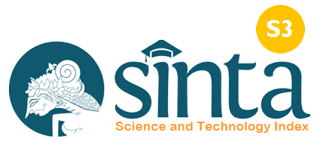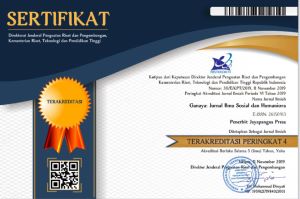Pengaruh Penggunaan Media Canva, Pembelajaran Berbasis Project dan Motivasi Belajar Terhadap Hasil Belajar Mata Pelajaran Dasar Desain Grafis Peserta Didik Kelas X TKJ di SMK Sejahtera Surabaya
DOI:
https://doi.org/10.37329/cetta.v8i4.4894Keywords:
Canva, Project-Based Learning, Learning Motivation, Learning Outcomes, Graphic DesignAbstract
This study aims to analyze the influence of using Canva media, the Project Based Learning (PjBL) model, and the level of learning motivation on students’ learning outcomes in the subject of Basic Graphic Design. The background of this research lies in the importance of digital-based learning innovations that can enhance creativity, motivation, and learning achievement, particularly in vocational education. Canva is considered effective in supporting idea visualization, while PjBL provides opportunities for more collaborative and contextual learning. The study employed a quantitative approach with a quasi-experimental design, namely a pretest-posttest control group design. The sample consisted of 75 tenth-grade students of TKJ at SMK Sejahtera Surabaya, divided into three groups: PjBL-Canva, PjBL-Drawing Book, and Conventional-Canva. Research instruments included a learning achievement test (25 multiple-choice items) and a learning motivation questionnaire (19 items), both of which were tested for validity and reliability before data collection. The findings revealed an increase in the average score from 77.29 in the pretest to 79.44 in the posttest. The Wilcoxon signed-rank test yielded a significance value of p = 0.000, indicating a significant difference between pretest and posttest scores. Levene’s test for homogeneity (p > 0.05) confirmed homogeneous variances, allowing further parametric analysis. Motivation analysis showed that the Canva group tended to have high motivation, whereas the conventional group was relatively low. Hypothesis testing using the Paired Sample Test and two-way ANOVA demonstrated that Canva media and the PjBL model had a significant effect on learning outcomes, with a meaningful interaction between learning methods and motivation. The study concludes that integrating interactive digital media with project-based approaches is effective in improving students’ motivation and learning outcomes and is therefore recommended for vocational education.
References
Anwar, A. (2022). Pengaruh Model Project-Based Learning terhadap Kreativitas dan Kemampuan Pemecahan Masalah Peserta Didik. Jurnal Pendidikan Teknologi dan Kejuruan, 19(2), 101–110.
Arsyad, A. (2011). Media Pembelajaran. Jakarta: Rajawali Pers.
Ayuningtyas, T., Wulandari, R., & Putri, S. (2023). Implementasi Canva sebagai Media Pembelajaran Berbasis Proyek pada Mata Pelajaran Seni Rupa. Jurnal Pendidikan Kreatif, 7(1), 55–63.
Darmuki, A., Putra, R., & Santoso, D. (2022). Pengaruh Media Digital terhadap Hasil Belajar Siswa SMK. Jurnal Teknologi Pendidikan, 11(3), 211–220.
Erfan, H., & Asra, S. (2022). Penggunaan Canva dalam Meningkatkan Motivasi dan Keterampilan Desain Grafis Siswa. Jurnal Pendidikan dan Multimedia, 14(2), 77–85.
Hamalik, O. (2011). Media Pembelajaran. Bandung: Remaja Rosdakarya.
Hasna Husniyah, H., Rahayu, S., & Sari, F. (2023). Pemanfaatan Gawai sebagai Media Pembelajaran di SMK: Studi Kasus Kelas X TKJ. Jurnal Pendidikan Kejuruan, 21(1), 45–54.
Hidayatullah, D., Wibowo, A., & Sari, N. (2023). Efektivitas Canva dalam Pembelajaran Desain Grafis di SMK. Jurnal Pendidikan Vokasi, 12(1), 33–42.
Iwafani, M., & Putri Ekaresty Haes, F. (2023). Penggunaan Canva sebagai Media Praktik Desain Grafis untuk Siswa SMK. Jurnal Pendidikan Teknik, 18(2), 99–108.
Kemendikbud. (2017). Panduan Implementasi Project-Based Learning di Sekolah. Jakarta: Kementerian Pendidikan dan Kebudayaan.
Kholid, A., Rahman, F., & Yuliani, N. (2022). Implementasi Project-Based Learning Berbasis Media Digital di SMK. Jurnal Inovasi Pendidikan, 10(3), 121–130.
Lubis, D. T. P., Siregar, R., & Nasution, A. (2023). Pengaruh Penggunaan Canva terhadap Motivasi Belajar dan Kreativitas Siswa SMK. Jurnal Teknologi Pendidikan, 12(2), 45–56.
Nurhadiyati, S., Fauzi, A., & Rizki, M. (2020a). Integrasi TIK dalam Kurikulum Merdeka: Tantangan dan Peluang di Sekolah Menengah. Jurnal Pendidikan Indonesia, 5(2), 33–42.
Nurhadiyati, S., Fauzi, A., & Rizki, M. (2020b). Strategi Pembelajaran Student-Centered di SMK Berbasis Kurikulum Merdeka. Jurnal Pendidikan Teknologi, 7(1), 15–24.
Rahmawati, L., Sari, F., & Wulandari, T. (2022). Motivasi Belajar dan Pengaruhnya terhadap Hasil Belajar Siswa SMK. Jurnal Psikologi Pendidikan, 16(1), 55–64.
Refitaniza, R., & Effendi, Y. (2022). Efektivitas Media Pembelajaran Digital terhadap Capaian Belajar Siswa. Jurnal Pendidikan dan Pembelajaran, 9(2), 99–108.
Simamora, R. (2022). Analisis Pengaruh Media Interaktif terhadap Hasil Belajar Siswa SMK. Jurnal Pendidikan Vokasi, 11(1), 45–53.
Suryaningsih, D., Haryanto, E., & Putra, R. (2022). Motivasi dan Penalaran Matematis dalam Meningkatkan Hasil Belajar SMK. Jurnal Penelitian Pendidikan, 20(3), 77–88.
Suyanto, & Jihad, S. (2013). Psikologi Belajar dan Pengajaran. Yogyakarta: Pustaka Pelajar.
Trilling, B., & Fadel, C. (2009). 21st Century Skills: Learning for Life in Our Times. San Francisco, CA: Jossey-Bass.
Yunita, D., & Cahyaningsih, F. (2021). Pemanfaatan Canva untuk Meningkatkan Keterlibatan Siswa dalam Pembelajaran Seni. Jurnal Pendidikan Seni, 8(2), 45–53.
Downloads
Published
How to Cite
Issue
Section
License
Copyright (c) 2025 Evi Mavidhotul Ilmi, Atiqoh Atiqoh, Hartono Hartono

This work is licensed under a Creative Commons Attribution-ShareAlike 4.0 International License.
An author who publishes in the Cetta : Jurnal Ilmu Pendidikan agrees to the following terms:
- Author retains the copyright and grants the journal the right of first publication of the work simultaneously licensed under the Creative Commons Attribution-ShareAlike 4.0 License that allows others to share the work with an acknowledgement of the work's authorship and initial publication in this journal
- Author is able to enter into separate, additional contractual arrangements for the non-exclusive distribution of the journal's published version of the work (e.g., post it to an institutional repository or publish it in a book) with the acknowledgement of its initial publication in this journal.
- Author is permitted and encouraged to post his/her work online (e.g., in institutional repositories or on their website) prior to and during the submission process, as it can lead to productive exchanges, as well as earlier and greater citation of the published work (See The Effect of Open Access).
Read more about the Creative Commons Attribution-ShareAlike 4.0 Licence here: https://creativecommons.org/licenses/by-sa/4.0/.





